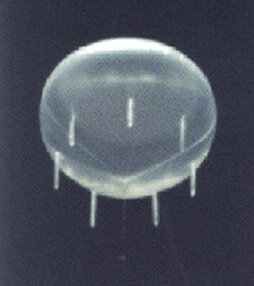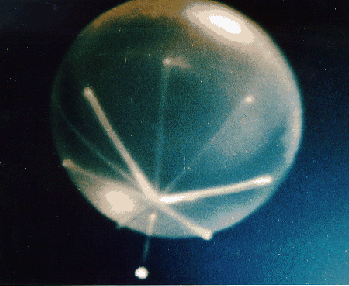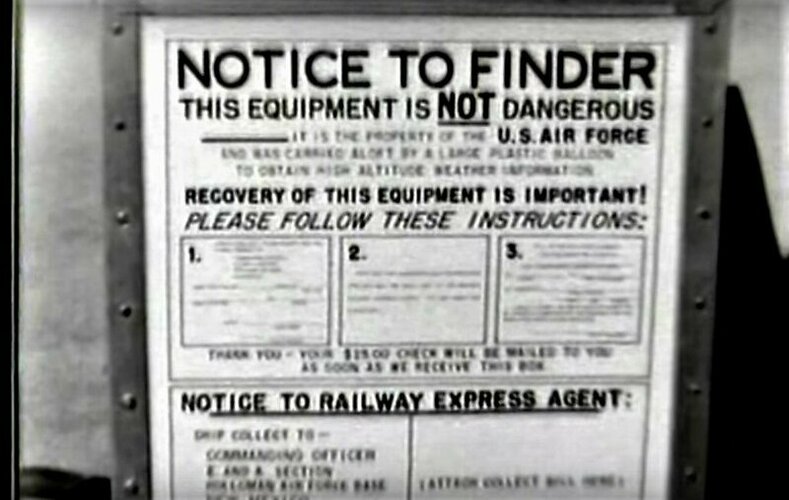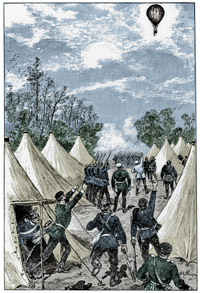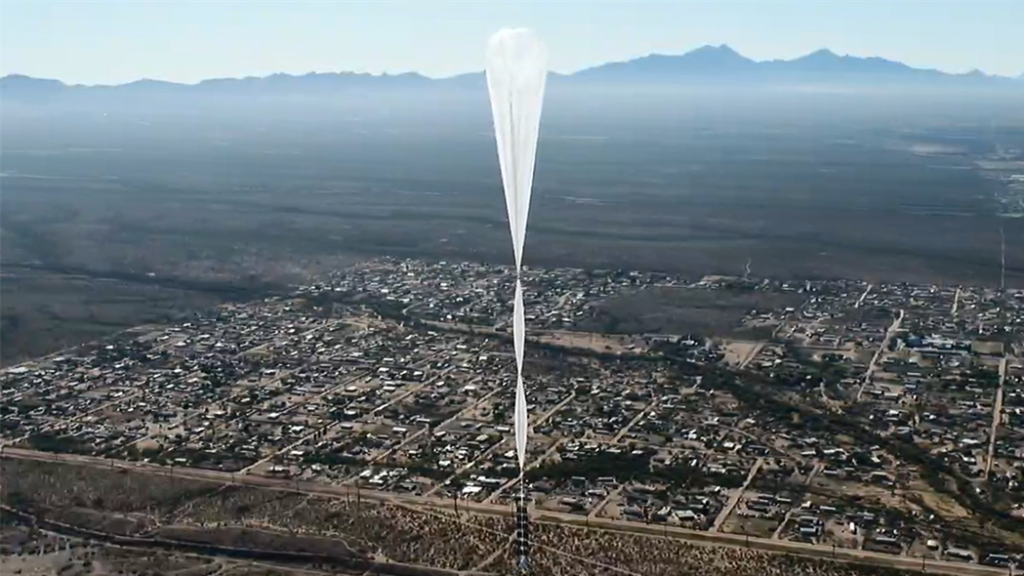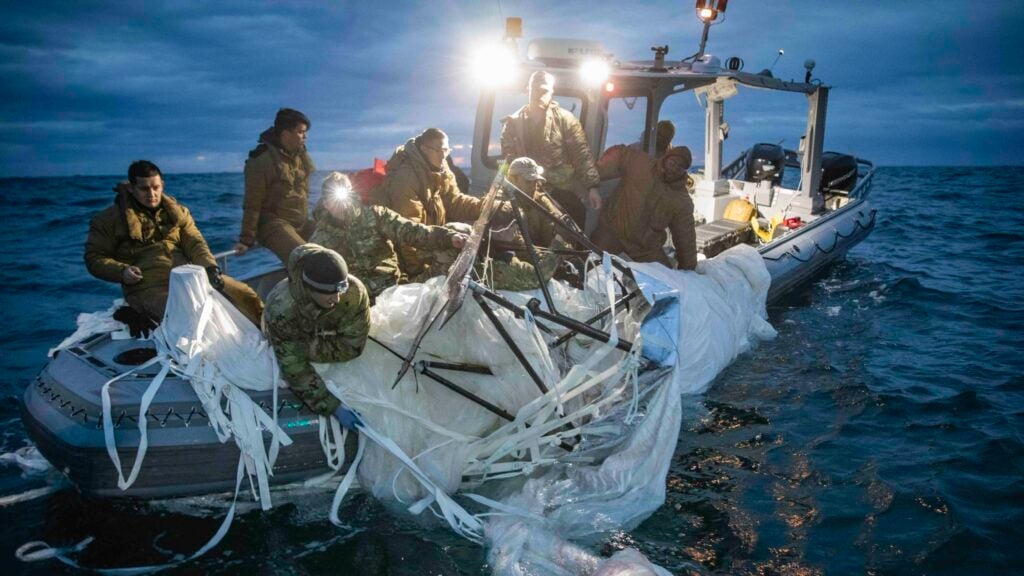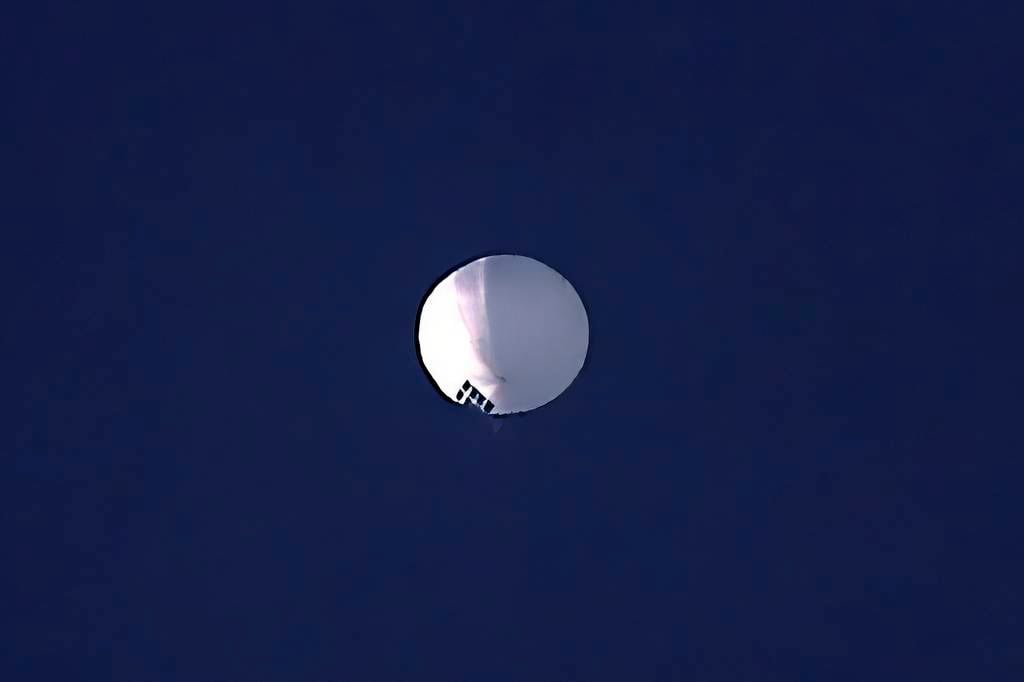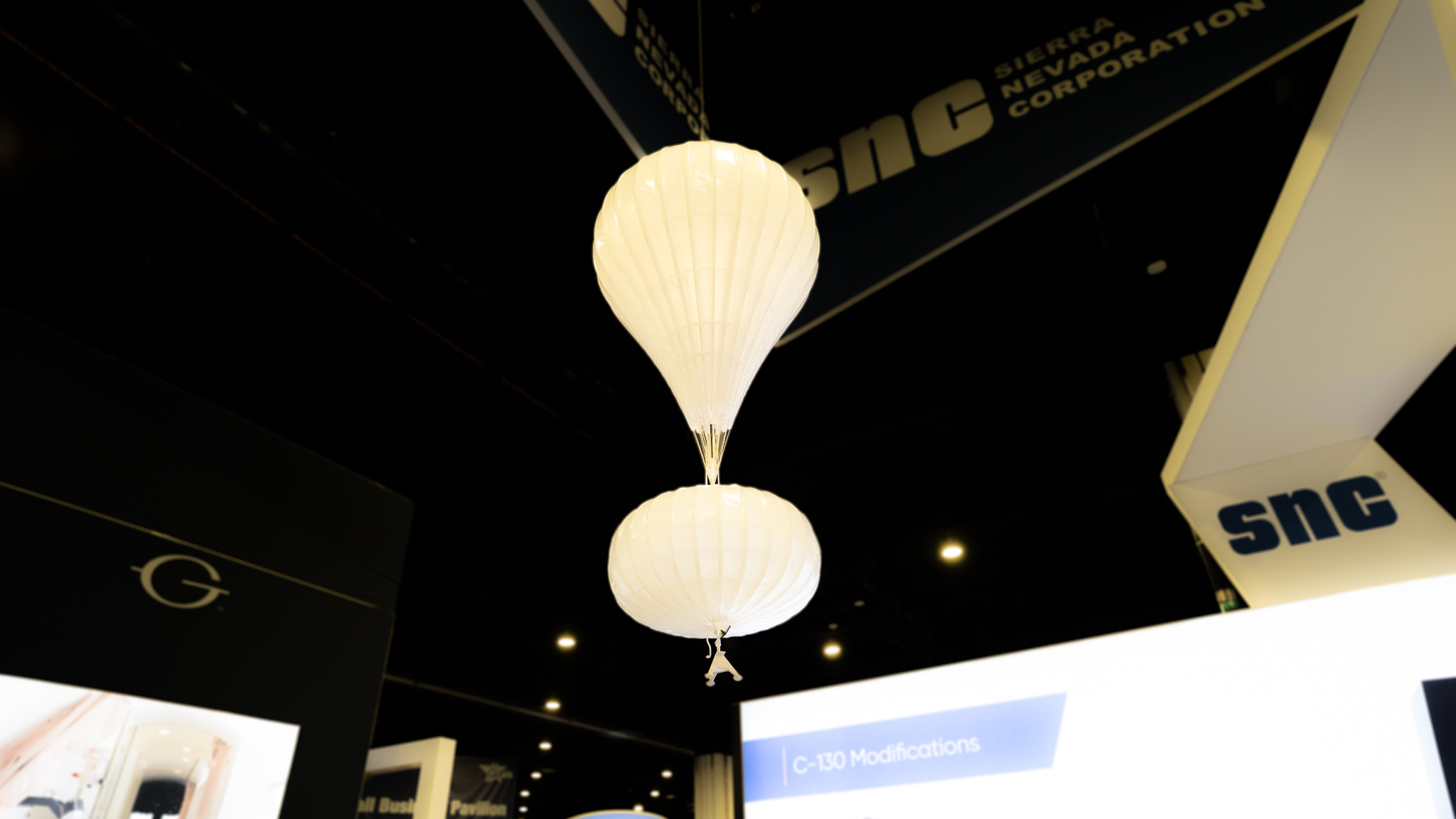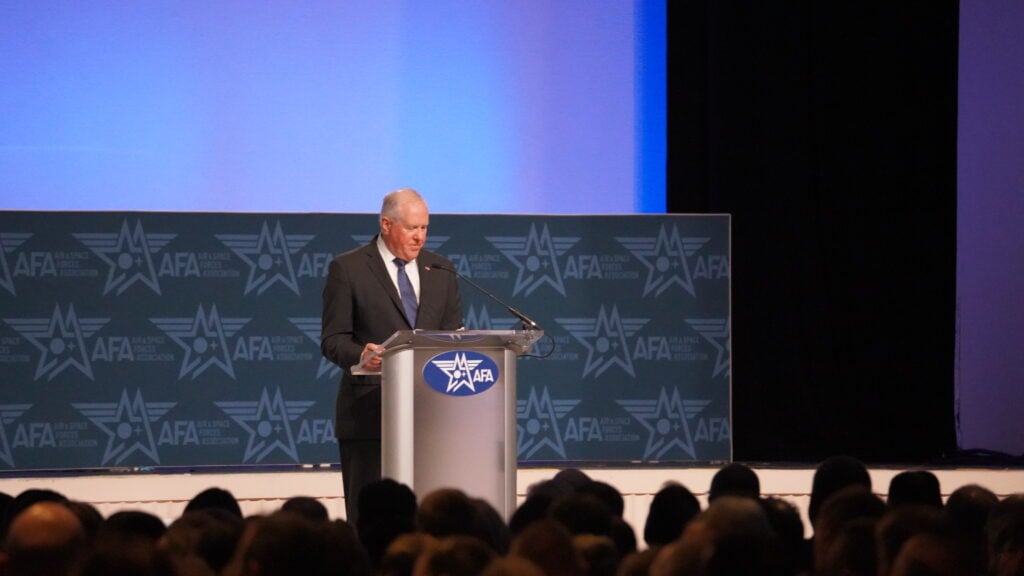seruriermarshal
ACCESS: Top Secret
- Joined
- 4 May 2008
- Messages
- 1,180
- Reaction score
- 574
Why These Badass Balloons Are the Pentagon's New Secret Weapon
New long-range U.S. weapons will be able to hit tactical targets like missile bases and air-defense radar from a thousand miles away or more, but only if they have aerial scouts to pinpoint their targets. The U.S. military has used stealth drones as spies to this point, but now, experimental stratospheric balloons are becoming viable, capable alternatives that can go undetected by enemy air defenses. Balloons combine remote capabilities with stealth to perform missions impossible for other aircraft, and they’re graduating from tests and demonstrations to live military operations.
Near-space craft like stratospheric balloons lurk anywhere between 60,000 and 80,000 feet, far above normal aircraft flight paths. The balloons come in the tradition of those used for artillery spotting in the Civil War, but they’re so high-tech today that they are sometimes mistaken for UFOs. The Pentagon is advancing its balloon program to put better eyes on a post-Afghanistan world marked by near-peer threats in Russia and China, and locally, it’s possible balloons will surveil the drug trade and smuggling networks via their unique integrated sensors and communications.
Better than Satellites
Reconnaissance aircraft like drones and balloons are limited by how long they can survey an area of interest—an attribute Justin Bronk, analyst for the UK defense thinktank RUSI, calls persistence. “Even with something like the Global Hawk [the U.S. main strategic reconnaissance drone] you only get about twenty hours over the area of interest, and less than that if they have to travel a significant distance to get there,” he says. The ability to keep eyes on an area for days at a time with a low-cost platform would mean a huge increase in the military’s intelligence-gathering capability.
Satellites fill some of the persistence gap, but low Earth orbit satellites 100-1,200 miles from the Earth’s surface only catch infrequent glimpses of a specific area, while satellites in geostationary orbit—meaning they travel with the Earth as it spins, staying above one location on the ground—are only useful for strategic applications like spotting ballistic missile launches.
Balloons’ durability and carrying strength could help them cover the bases neglected by those craft. World View Enterprises, a private company which develops near-space technology for the Pentagon and NASA, calls their balloons Stratollites. These giant pumpkin-shaped aircraft measure up to 800,000 cubic feet in volume. Their gondolas can house daylight and thermal cameras, radar, radio frequency sensors, and solar panels.
With a newly developed sensor that can measure wind patterns, and a design that can execute flight changes efficiently based on those readings, a Stratollite can change altitude, catch winds, and maintain position within 12 miles of a specified target for four days. “We think this has the potential to be a game-changer for us: a great, long-duration, long-dwell surveillance platform,” said Admiral Tidd, Commander of U.S. Southern Command over Central America, South America, and the Caribbean.
The Ascent to the Stratosphere
Japanese scientists were first to harness intercontinental balloons for military purposes in 1944. Their ‘Fu-go’ balloons carried incendiary bombs at 30,000 feet in an unsuccessful attempt to ignite forest fires across the Pacific Northwest.
A range of high-altitude balloon projects between 50,000-100,000 feet followed during the Cold War. The USAF’s Project Genetrix released spy balloons disguised as weather balloons over the Soviet Union in 1956, their downward-pointing cameras intending to photograph top-secret installations. This was the only way to see inside the country before satellites, but as the unpowered balloons could only drift at random with the wind, they gathered little useful information.
A solution to the navigation challenge appeared by way of accessing the stratosphere, a convection-less portion of the atmosphere in which higher altitudes coincide with warmer temperatures. Without convection, wind patterns stay consistent at a given altitude, so with enough weather information, a balloon can go in any desired direction by adjusting to the right altitude and riding the wind. Project Loon, run by Google parent company Alphabet, developed stratospheric balloons with this capability in 2017. Several of these balloons rode countervailing winds at different heights to stay over Puerto Rico after Hurricane Maria in 2017, providing internet access for 100,000 people.
Microwaves with Lasers
Both World View and Loon refined wind-prediction algorithms for their balloon projects, feeding weather reports and flight data into machine-learning processes to help their balloons find the right altitude at which to fly. But the Defense Advanced Research Projects Agency (DARPA), developed a laser-based sensor to measure winds directly, rather than use a predictive model. Known as Strat-OAWL (Stratospheric Optical Autocovariance Wind Lidar), the sensor is derived from a NASA instrument used to observe the atmosphere from space. The original tech was the size of a kitchen table, says Alexander Walan, program manager for the now-complete Adaptable Lighter Than Air (ALTA) project at DARPA, but Strat-OAWL is the size of a microwave oven.
Strat-OAWL uses a Doppler sensor to track air movement. It bounces a laser beam off particles in the air and gathers the return with a telescope in order to measure the changes in the laser’s wavelength and “read” the wind. It was a high-risk project for DARPA, with little precedent for the technology, but in a 2019 capstone experiment, the ALTA project equipped outside balloon programs with Strat-OAWL sensors to fly their crafts across America with reliable, precise navigation. “We showed we could maneuver a stratospheric lighter-than-air craft across the continent,” says Walan. “We travelled to specific points of interest that we chose ahead of time, and showed we could loiter in any area we chose.” A purpose-built turbo compressor helped the balloons change heights with speed and efficiency.
ALTA also gave valuable operational experience for stratospheric balloon flights. The developers learned they needed rugged electronics that could withstand the space-like conditions at altitude. The equipment had to withstand a low-pressure environment that often saw extreme temperatures. According to Walan, the balloons themselves might last up to a month at these altitudes, though weeks-long missions are a safer bet.
Later balloon generations might have more endurance, able to watch over a point of interest for months. Today, that persistence requires relays of drones, with ground crew members managing landings and takeoffs.
ALTA transferred its technology to the U.S. military for operational use, and though Walan cannot provide further detail, budget documents hint the tech could reach near-space platforms operating at the level of the experimental balloons.
COLD STAR's UFO Problem
The Pentagon’s efforts to operationalize the stratosphere begin with the classified program COLD STAR (COvert Long Dwell STratospheric ARchitecture), a balloon that can lurk undetected in enemy airspace. COLD STAR’s balloon has autonomous navigation, high fidelity sensors, and on-board AI. Budget documents note it participated in joint exercises this year, so it might be the unnamed balloon seen in photos of exercise Northern Edge in Alaska, an “experimental balloon operation” with the USAF.
COLD STAR’s plastic balloon is transparent to radar, and its gondola can be made stealthy by eliminating the straight lines and sharp corners that produce strong radar reflections in aircraft design. “It still has to stay within certain bounds dictated by the payload and the need for solar cells,” Bronk says. “But it does open the doors to different ways of shaping to minimize the radar cross section compared to other aircraft.” The ideal shape might look more like an egg than a typical balloon basket.
Bronk notes that many older radars automatically filter out slow-moving objects more likely to be birds or insects, so even a non-stealthy balloon would be invisible to dated tech. Further, there are no hot jet engine exhausts or wing edges heated by air friction on a balloon—both shine like beacons when viewed in the infra-red.
No balloon is going to be completely invisible, however. Even at 80,000 feet an object the size of a Stratollite is visible as a bright blob if caught by sunlight at the right angle. Multiple balloon programs, including ALTA, have inspired reports of extraterrestrial aircraft. “We were placing bets on how long it would take us to start getting UFO reports,” says Walan.
When Balloons Attack
COLD STAR will “refine hypersonic and long-range fires kill chains to counter time-sensitive targets,” per the Department of Defense’s budget documents for the fiscal year 2022. This suggests balloons will spot targets like mobile missile launchers for weapons like the Army’s Long-Range Hypersonic Weapon, which is intended to hit targets from 1,725 miles away.
“Relaying back data from these assets in real time, especially in high-resolution, is a real challenge at present,” Bronk says.
Only a handful of specialized support aircraft, called Battlefield Airborne Communications Nodes, or BACNs, do this job now. Stratollites offer a solution as long-endurance communication relays, and COLD STAR is equipped with electronics for processing and disseminating information.
The military has also tapped stratospheric balloons for seeding areas behind enemy lines with thousands of tiny radio-frequency sensors meant for cyberspace situational understanding—mapping enemy positions through electronic signals like radio waves and wi-fi. Precision strikes can use these maps to take out otherwise invisible targets, with the sensors also able to confirm those strikes’ effectiveness.
The seeding project is likely to build on CICADA – ‘Close-in Covert Autonomous Disposable Aircraft’ – circuit boards folded into aerodynamic shapes like a paper plane. Each CICADA can glide from a balloon to a specific point on the ground. The balloon then acts as a communication node, passing data from the CICADA sensors back to headquarters, and distributing more sensors on areas of interest.
Other Army presentations indicate plans to release swarms of small drones from stratospheric balloons, either for detailed up-close reconnaissance and intelligence gathering, or for strikes on critical targets such as radar and communications.
The Future of Balloon Warfare
Another program, TRIPPWIRE -- The Tactical Responsive Intelligence, Surveillance, and Reconnaissance (ISR) Platforms and Payloads Watching Isolated Remote Environments – will include a Counter-Stratospheric Operations experiment in the next year. This apparently means balloon vs. balloon warfare.
Knocking out a balloon will probably require a hit on the gondola, which is more difficult than targeting a jet or drone because the gondola doesn’t have a pressurized cockpit, fuel tanks, munitions, or high-speed turbines. It’s hard to blow one up. “It’s a different target set,” Bronk says. “You would not create an explosive event as a hit on an aircraft might, but there’s still a good chance of taking it out of commission.”
It might be cheap to replace balloons relative to other aircraft—World View claims a month-long Stratollite mission will be "orders of magnitude" cheaper than, say, a drone mission of the same duration—so the Pentagon might rely on a combination of stealth and redundancy when approaching these aircraft for combat. If one is shot down, another could be nearby to take over.
President Biden indicated that after the withdrawal from Afghanistan, the U.S. will rely more on ‘over the horizon’ operations, in which there are no boots on the ground. This will place more reliance on remote sensors such as drones, meaning balloons might start to supplement and replace traditional varieties of drone. Theaters like the South China Sea, which call for persistent observation, might be a good fit for balloons. Closer to home, Southern Command has suggested using balloon technology to counter drug smuggling through surveillance.
Balloon technology is fast moving into practical use, be it in stealth use cases or combat. Expect more projects in the U.S. and among its competitors—and prepare for more UFO sightings.
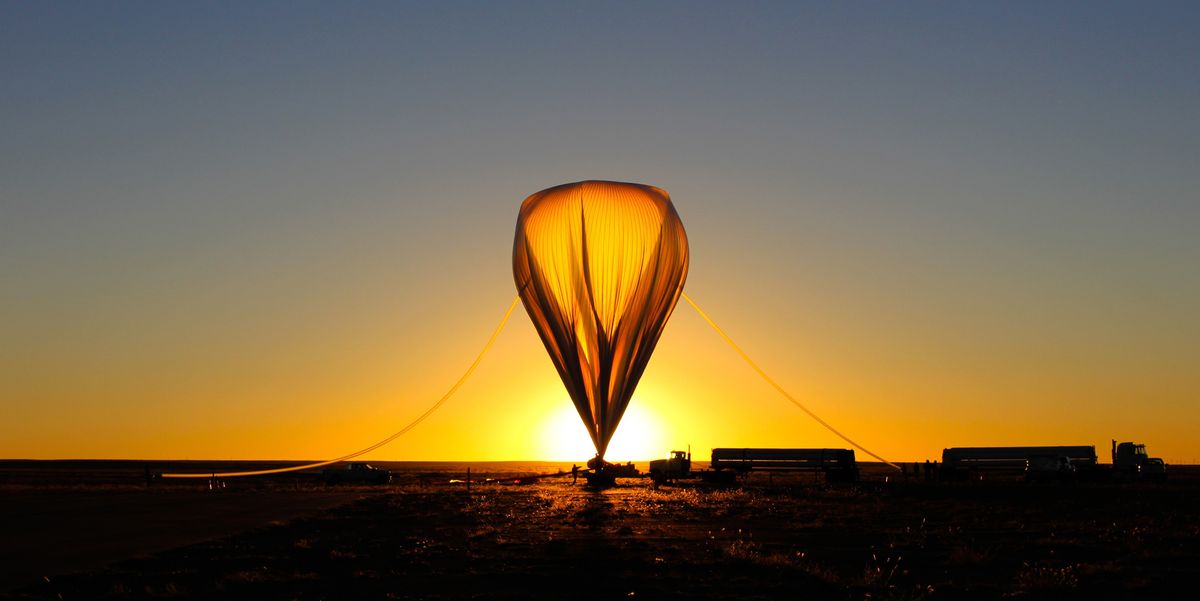
 www.popularmechanics.com
www.popularmechanics.com
New long-range U.S. weapons will be able to hit tactical targets like missile bases and air-defense radar from a thousand miles away or more, but only if they have aerial scouts to pinpoint their targets. The U.S. military has used stealth drones as spies to this point, but now, experimental stratospheric balloons are becoming viable, capable alternatives that can go undetected by enemy air defenses. Balloons combine remote capabilities with stealth to perform missions impossible for other aircraft, and they’re graduating from tests and demonstrations to live military operations.
Near-space craft like stratospheric balloons lurk anywhere between 60,000 and 80,000 feet, far above normal aircraft flight paths. The balloons come in the tradition of those used for artillery spotting in the Civil War, but they’re so high-tech today that they are sometimes mistaken for UFOs. The Pentagon is advancing its balloon program to put better eyes on a post-Afghanistan world marked by near-peer threats in Russia and China, and locally, it’s possible balloons will surveil the drug trade and smuggling networks via their unique integrated sensors and communications.
Better than Satellites
Reconnaissance aircraft like drones and balloons are limited by how long they can survey an area of interest—an attribute Justin Bronk, analyst for the UK defense thinktank RUSI, calls persistence. “Even with something like the Global Hawk [the U.S. main strategic reconnaissance drone] you only get about twenty hours over the area of interest, and less than that if they have to travel a significant distance to get there,” he says. The ability to keep eyes on an area for days at a time with a low-cost platform would mean a huge increase in the military’s intelligence-gathering capability.
Satellites fill some of the persistence gap, but low Earth orbit satellites 100-1,200 miles from the Earth’s surface only catch infrequent glimpses of a specific area, while satellites in geostationary orbit—meaning they travel with the Earth as it spins, staying above one location on the ground—are only useful for strategic applications like spotting ballistic missile launches.
Balloons’ durability and carrying strength could help them cover the bases neglected by those craft. World View Enterprises, a private company which develops near-space technology for the Pentagon and NASA, calls their balloons Stratollites. These giant pumpkin-shaped aircraft measure up to 800,000 cubic feet in volume. Their gondolas can house daylight and thermal cameras, radar, radio frequency sensors, and solar panels.
With a newly developed sensor that can measure wind patterns, and a design that can execute flight changes efficiently based on those readings, a Stratollite can change altitude, catch winds, and maintain position within 12 miles of a specified target for four days. “We think this has the potential to be a game-changer for us: a great, long-duration, long-dwell surveillance platform,” said Admiral Tidd, Commander of U.S. Southern Command over Central America, South America, and the Caribbean.
The Ascent to the Stratosphere
Japanese scientists were first to harness intercontinental balloons for military purposes in 1944. Their ‘Fu-go’ balloons carried incendiary bombs at 30,000 feet in an unsuccessful attempt to ignite forest fires across the Pacific Northwest.
A range of high-altitude balloon projects between 50,000-100,000 feet followed during the Cold War. The USAF’s Project Genetrix released spy balloons disguised as weather balloons over the Soviet Union in 1956, their downward-pointing cameras intending to photograph top-secret installations. This was the only way to see inside the country before satellites, but as the unpowered balloons could only drift at random with the wind, they gathered little useful information.
A solution to the navigation challenge appeared by way of accessing the stratosphere, a convection-less portion of the atmosphere in which higher altitudes coincide with warmer temperatures. Without convection, wind patterns stay consistent at a given altitude, so with enough weather information, a balloon can go in any desired direction by adjusting to the right altitude and riding the wind. Project Loon, run by Google parent company Alphabet, developed stratospheric balloons with this capability in 2017. Several of these balloons rode countervailing winds at different heights to stay over Puerto Rico after Hurricane Maria in 2017, providing internet access for 100,000 people.
Microwaves with Lasers
Both World View and Loon refined wind-prediction algorithms for their balloon projects, feeding weather reports and flight data into machine-learning processes to help their balloons find the right altitude at which to fly. But the Defense Advanced Research Projects Agency (DARPA), developed a laser-based sensor to measure winds directly, rather than use a predictive model. Known as Strat-OAWL (Stratospheric Optical Autocovariance Wind Lidar), the sensor is derived from a NASA instrument used to observe the atmosphere from space. The original tech was the size of a kitchen table, says Alexander Walan, program manager for the now-complete Adaptable Lighter Than Air (ALTA) project at DARPA, but Strat-OAWL is the size of a microwave oven.
Strat-OAWL uses a Doppler sensor to track air movement. It bounces a laser beam off particles in the air and gathers the return with a telescope in order to measure the changes in the laser’s wavelength and “read” the wind. It was a high-risk project for DARPA, with little precedent for the technology, but in a 2019 capstone experiment, the ALTA project equipped outside balloon programs with Strat-OAWL sensors to fly their crafts across America with reliable, precise navigation. “We showed we could maneuver a stratospheric lighter-than-air craft across the continent,” says Walan. “We travelled to specific points of interest that we chose ahead of time, and showed we could loiter in any area we chose.” A purpose-built turbo compressor helped the balloons change heights with speed and efficiency.
ALTA also gave valuable operational experience for stratospheric balloon flights. The developers learned they needed rugged electronics that could withstand the space-like conditions at altitude. The equipment had to withstand a low-pressure environment that often saw extreme temperatures. According to Walan, the balloons themselves might last up to a month at these altitudes, though weeks-long missions are a safer bet.
Later balloon generations might have more endurance, able to watch over a point of interest for months. Today, that persistence requires relays of drones, with ground crew members managing landings and takeoffs.
ALTA transferred its technology to the U.S. military for operational use, and though Walan cannot provide further detail, budget documents hint the tech could reach near-space platforms operating at the level of the experimental balloons.
COLD STAR's UFO Problem
The Pentagon’s efforts to operationalize the stratosphere begin with the classified program COLD STAR (COvert Long Dwell STratospheric ARchitecture), a balloon that can lurk undetected in enemy airspace. COLD STAR’s balloon has autonomous navigation, high fidelity sensors, and on-board AI. Budget documents note it participated in joint exercises this year, so it might be the unnamed balloon seen in photos of exercise Northern Edge in Alaska, an “experimental balloon operation” with the USAF.
COLD STAR’s plastic balloon is transparent to radar, and its gondola can be made stealthy by eliminating the straight lines and sharp corners that produce strong radar reflections in aircraft design. “It still has to stay within certain bounds dictated by the payload and the need for solar cells,” Bronk says. “But it does open the doors to different ways of shaping to minimize the radar cross section compared to other aircraft.” The ideal shape might look more like an egg than a typical balloon basket.
Bronk notes that many older radars automatically filter out slow-moving objects more likely to be birds or insects, so even a non-stealthy balloon would be invisible to dated tech. Further, there are no hot jet engine exhausts or wing edges heated by air friction on a balloon—both shine like beacons when viewed in the infra-red.
No balloon is going to be completely invisible, however. Even at 80,000 feet an object the size of a Stratollite is visible as a bright blob if caught by sunlight at the right angle. Multiple balloon programs, including ALTA, have inspired reports of extraterrestrial aircraft. “We were placing bets on how long it would take us to start getting UFO reports,” says Walan.
When Balloons Attack
COLD STAR will “refine hypersonic and long-range fires kill chains to counter time-sensitive targets,” per the Department of Defense’s budget documents for the fiscal year 2022. This suggests balloons will spot targets like mobile missile launchers for weapons like the Army’s Long-Range Hypersonic Weapon, which is intended to hit targets from 1,725 miles away.
“Relaying back data from these assets in real time, especially in high-resolution, is a real challenge at present,” Bronk says.
Only a handful of specialized support aircraft, called Battlefield Airborne Communications Nodes, or BACNs, do this job now. Stratollites offer a solution as long-endurance communication relays, and COLD STAR is equipped with electronics for processing and disseminating information.
The military has also tapped stratospheric balloons for seeding areas behind enemy lines with thousands of tiny radio-frequency sensors meant for cyberspace situational understanding—mapping enemy positions through electronic signals like radio waves and wi-fi. Precision strikes can use these maps to take out otherwise invisible targets, with the sensors also able to confirm those strikes’ effectiveness.
The seeding project is likely to build on CICADA – ‘Close-in Covert Autonomous Disposable Aircraft’ – circuit boards folded into aerodynamic shapes like a paper plane. Each CICADA can glide from a balloon to a specific point on the ground. The balloon then acts as a communication node, passing data from the CICADA sensors back to headquarters, and distributing more sensors on areas of interest.
Other Army presentations indicate plans to release swarms of small drones from stratospheric balloons, either for detailed up-close reconnaissance and intelligence gathering, or for strikes on critical targets such as radar and communications.
The Future of Balloon Warfare
Another program, TRIPPWIRE -- The Tactical Responsive Intelligence, Surveillance, and Reconnaissance (ISR) Platforms and Payloads Watching Isolated Remote Environments – will include a Counter-Stratospheric Operations experiment in the next year. This apparently means balloon vs. balloon warfare.
Knocking out a balloon will probably require a hit on the gondola, which is more difficult than targeting a jet or drone because the gondola doesn’t have a pressurized cockpit, fuel tanks, munitions, or high-speed turbines. It’s hard to blow one up. “It’s a different target set,” Bronk says. “You would not create an explosive event as a hit on an aircraft might, but there’s still a good chance of taking it out of commission.”
It might be cheap to replace balloons relative to other aircraft—World View claims a month-long Stratollite mission will be "orders of magnitude" cheaper than, say, a drone mission of the same duration—so the Pentagon might rely on a combination of stealth and redundancy when approaching these aircraft for combat. If one is shot down, another could be nearby to take over.
President Biden indicated that after the withdrawal from Afghanistan, the U.S. will rely more on ‘over the horizon’ operations, in which there are no boots on the ground. This will place more reliance on remote sensors such as drones, meaning balloons might start to supplement and replace traditional varieties of drone. Theaters like the South China Sea, which call for persistent observation, might be a good fit for balloons. Closer to home, Southern Command has suggested using balloon technology to counter drug smuggling through surveillance.
Balloon technology is fast moving into practical use, be it in stealth use cases or combat. Expect more projects in the U.S. and among its competitors—and prepare for more UFO sightings.

America Is Developing Its Own Spy Balloons. Here’s Why They’re So Useful
Air-tracking laser beams, swarms of support drones, and total dominion at 70,000 feet.

